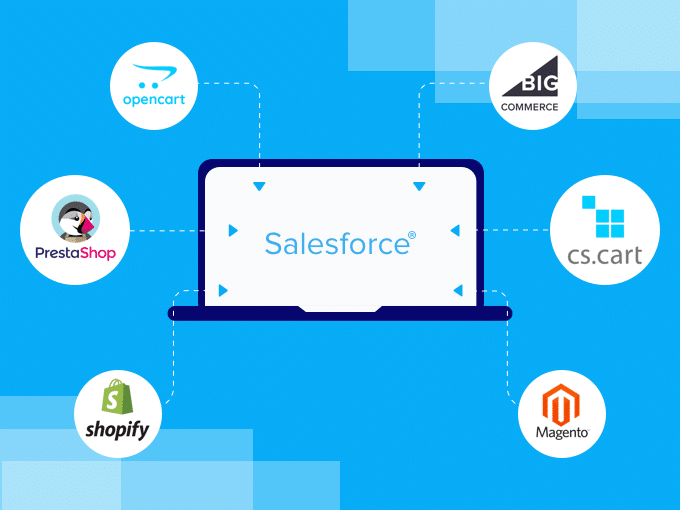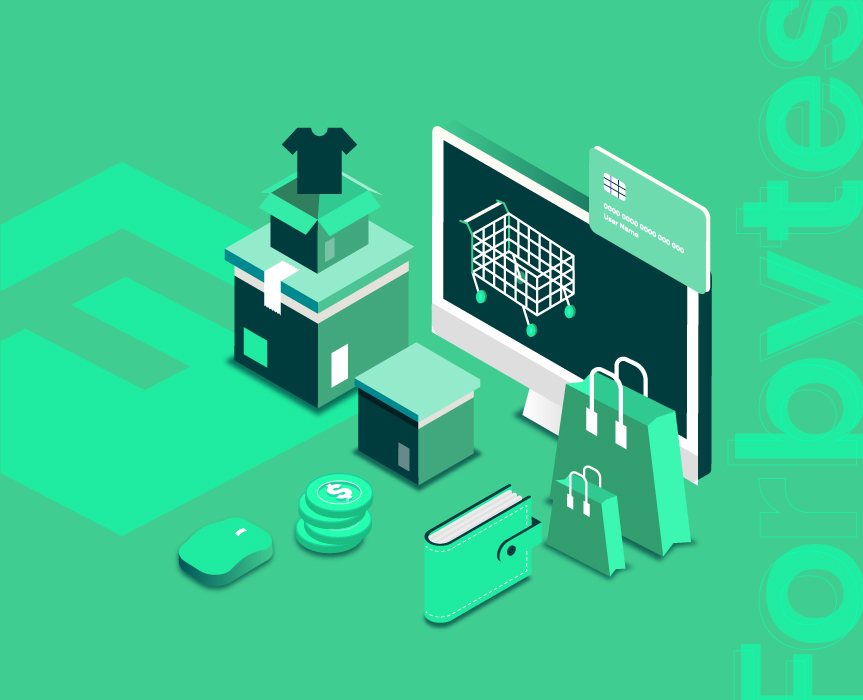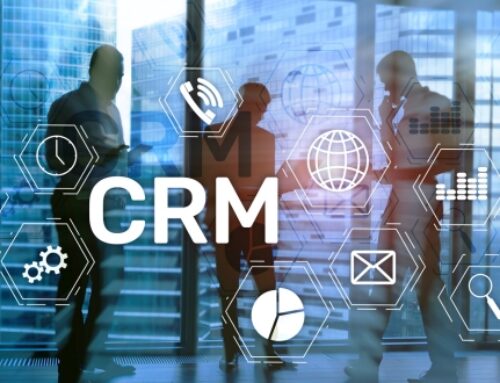Introduction: Unveiling the Power of Harmony – Integrating Salesforce CRM with Your E-commerce Engine

In today’s hyper-competitive digital landscape, every touchpoint with your customer matters. Yet, many businesses struggle with a disjointed landscape, where their E-commerce platform operates in isolation from their Customer Relationship Management (CRM) system. This disconnect creates friction, leading to lost opportunities, fragmented customer experiences, and operational inefficiencies.
Imagine a world where your E-commerce engine and CRM dance in perfect harmony, seamlessly sharing data, orchestrating personalized journeys, and streamlining workflows. This is the transformative power of integrating Salesforce CRM with your E-commerce platform.
Before we dive into the magic, let’s paint the picture of discord. Operating with separate systems is like navigating a maze blindfolded. You lose sight of valuable customer insights, hindering personalized marketing and targeted lead nurturing. Manual data entry becomes a tedious monster, while siloed information breeds inconsistencies and frustrating disconnects for your customers.
Enter Salesforce CRM, the knight in shining armor ready to slay these dragons. By integrating this robust platform with your E-commerce engine, you unlock a treasure trove of benefits:
- Data-driven insights: Gain a 360-degree view of your customers, understanding their preferences, purchase history, and interactions across channels. This empowers you to make informed decisions, personalize experiences, and predict future behavior.
- Automated workflows: Ditch the grunt work! Automate repetitive tasks like order confirmation emails, personalized product recommendations, and targeted abandoned cart campaigns. Free your team to focus on high-impact activities and nurture strategic relationships.
- Streamlined processes: Eliminate data silos and manual data entry. Real-time updates flow seamlessly between platforms, boosting operational efficiency and ensuring accuracy.
- Enhanced customer experience: From targeted promotions to personalized support, cater to each customer’s unique needs and preferences. Watch satisfaction soar as customers enjoy a frictionless, omnichannel journey.
- Increased ROI: Improved conversion rates, personalized marketing campaigns, and data-driven insights all contribute to one glorious outcome – a significant boost in your return on investment.
But are these promises mere whispers in the wind? Absolutely not! Real-life success stories abound. Take the example of [Company X], a clothing retailer, who integrated Salesforce CRM with their E-commerce platform. The results? A 25% increase in conversion rates, a 30% reduction in customer service queries, and a staggering 40% improvement in repeat customer purchases.
These are not isolated anecdotes, but powerful testaments to the transformative potential of Salesforce CRM E-commerce integration. Are you ready to unlock this potential for your business? In the upcoming sections, we’ll delve deeper into the core features and functionalities of this integration, explore advanced strategies for maximizing its impact, and equip you with best practices for a smooth and successful implementation.
Get ready to witness the magic of a unified customer experience, streamlined operations, and explosive growth. The stage is set, and Salesforce CRM is your guide. Let’s embark on this transformative journey together!
Core Features and Functionality: Unleashing the Symphony of Data and Automation

With the stage set in the captivating introduction, let’s delve deeper into the orchestra of features that power the Salesforce CRM E-commerce integration. This symphony of data and automation will transform your business, note by note, into a harmonious masterpiece of customer experience and operational efficiency.
- Bi-directional Data Harmony: A Duet of Knowledge
Imagine a world where customer information flows seamlessly between your E-commerce platform and CRM, like two musicians playing in perfect unison. This is the magic of data synchronization, the core feature that ensures a single, unified view of your customer across channels.
- Real-time updates: No more outdated data or manual syncs! Customer details, purchase history, and interactions update automatically in both systems, ensuring a single source of truth.
- Personalized touchpoints: Leverage CRM data to personalize marketing campaigns, product recommendations, and support interactions, making every touchpoint feel like a tailored experience.
- Unified customer journey: Track customer interactions across touchpoints, from browsing to purchase to post-sale support, creating a seamless and consistent experience.
- Customer Segmentation: Tailoring the Performance
Think of your customers as a diverse audience, each with unique preferences and needs. Customer segmentation allows you to group these audiences based on shared characteristics, ensuring your marketing efforts resonate with each segment.
- Targeted campaigns: Craft personalized email campaigns, product recommendations, and promotions that cater to specific customer segments, boosting engagement and conversion rates.
- Predictive insights: Leverage purchase history and browsing behavior to identify potential high-value customers or predict churn risk, allowing you to take proactive measures.
- Dynamic content: Display personalized product recommendations and content on your E-commerce platform, tailoring the experience to each segment’s interests and desires.
- Lead Generation and Nurturing: From Curious Clicks to Loyal Customers
Imagine a net that captures potential customers wandering your online aisles, guiding them towards conversion. That’s the power of streamlined lead generation and nurturing within the integration.
- Lead capture forms: Integrate lead capture forms on your E-commerce platform, collecting valuable information like email addresses and interests for targeted marketing campaigns.
- Automated lead scoring: Assign scores to leads based on their online behavior and purchase history, helping you prioritize sales efforts towards those with the highest conversion potential.
- Nurturing workflows: Trigger personalized email sequences based on lead behavior, educating them about your products and services, and gently guiding them towards purchase.
- Automated Marketing Campaigns: Playing the Right Notes at the Right Time
Imagine marketing campaigns that adapt and evolve like the improvisations of a jazz band, responding to each customer’s unique actions and preferences. This is the magic of automated marketing within the integration.
- Triggered emails: Send personalized emails based on specific customer actions, such as abandoned cart reminders, product recommendations triggered by browsing behavior, or birthday greetings.
- Dynamic content in emails: Use CRM data to personalize email content with product recommendations, relevant offers, and customer names, creating a more engaging and relevant experience.
- A/B testing: Optimize your marketing campaigns by automatically testing different subject lines, content variations, and call-to-actions, ensuring you deliver the most effective messages.
- Order Management and Fulfillment: A Smooth Flow from Click to Delivery
Picture your order fulfillment process as a graceful ballet, with orders flowing seamlessly from confirmation to delivery. The integration’s order management and fulfillment features make this a reality.
- Real-time order tracking: Track order progress in real-time, from confirmation to shipment, providing customers with transparency and peace of mind.
- Inventory management: Synchronize inventory levels between your E-commerce platform and CRM, preventing overselling and ensuring product availability for customers.
- Automated fulfillment workflows: Automate tasks like order confirmation emails, shipping notifications, and return management, freeing your team for more strategic tasks.
- Comprehensive Reporting and Analytics: Unveiling the Symphony’s Secrets
Just as a conductor analyzes the performance of each instrument, comprehensive reporting and analytics within the integration provide insights into every facet of your E-commerce operation.
- Customer behavior reports: Gain insights into customer demographics, purchase history, browsing patterns, and engagement levels, allowing you to tailor your offerings and marketing strategies.
- Campaign performance reports: Track the effectiveness of your marketing campaigns, identifying which resonate best with your audience and optimizing future efforts for maximum ROI.
- Sales metrics and dashboards: Monitor key metrics like conversion rates, average order value, and customer acquisition cost, providing a real-time picture of your E-commerce performance.
This symphony of features within the Salesforce CRM E-commerce integration is more than just a collection of tools; it’s a conductor, guiding your business towards a harmonious future of personalized customer experiences, streamlined operations, and explosive growth.
Advanced Integration Strategies: Beyond the Symphony, Unlocking the Opera
The core features of Salesforce CRM E-commerce integration are the foundation of a successful online journey. But to truly transcend and enthrall your audience, let’s venture into the realm of advanced integration strategies, where AI, personalization, and bespoke automation take center stage.
- AI and Machine Learning: The Maestro of Personalization
Imagine an orchestra conductor who anticipates each musician’s needs, adjusting the tempo and dynamics in real-time. That’s the power of AI and machine learning within the integration.
- Personalized product recommendations: Leverage customer data and browsing behavior to recommend products that cater to individual preferences and past purchases. This increases conversion rates and customer satisfaction.
- Predictive analytics: Identify potential churn risks before they materialize. By analyzing purchase history, engagement patterns, and external factors, you can take proactive steps to retain valuable customers.
- Dynamic pricing and promotions: Utilize AI to adjust prices and offer personalized discounts based on individual customer profiles and market trends, maximizing revenue and customer satisfaction.
- Predictive Analytics: A Glimpse into the Future Symphony
Picture a crystal ball revealing customer behavior before it unfolds. That’s the essence of predictive analytics, allowing you to prepare for and capitalize on future trends.
- Demand forecasting: Predict future inventory needs based on customer behavior and market data, ensuring sufficient stock to meet demand and avoid overstocking or stockouts.
- Marketing campaign optimization: Analyze the potential success of different marketing campaigns before launch, allocating resources to those with the highest predicted ROI.
- Churn risk identification: Proactively identify customers at risk of churning and implement targeted retention strategies, minimizing customer loss and protecting your revenue stream.
- Dynamic Product Bundling and Cross-Selling: Harmonizing Purchases
Picture a conductor crafting a seamless transition between movements, creating a cohesive experience. Dynamic product bundling and cross-selling achieve this within the integration.
- Personalized product bundles: Recommend pre-configured product bundles based on individual customer preferences and purchase history, increasing average order value and customer satisfaction.
- Contextual cross-selling: Suggest relevant products during the checkout process or browsing experience, leveraging real-time customer behavior and purchase intent to boost upselling and cross-selling opportunities.
- AI-powered dynamic offers: Utilize AI to personalize product bundles and cross-sell offers in real-time, maximizing relevance and conversion rates.
- Personalized Loyalty Programs: Orchestrating Customer Devotion
Think of a dedicated violinist rewarded for their virtuosity, inspiring continued dedication. Personalized loyalty programs achieve this within the integration.
- Tiered loyalty programs: Reward customers with exclusive benefits and privileges based on their purchase history and engagement level, fostering loyalty and repeat purchases.
- Personalized rewards and incentives: Tailor rewards and offers to individual customer preferences and past interactions, making the program feel more significant and engaging.
- Gamification elements: Integrate gamification elements like points, badges, and leaderboards into your loyalty program, increasing customer engagement and driving desired behaviors.
- Custom Workflows and Automation: Composing Your Unique Masterpiece
Imagine an orchestra adapting its performance to fit a specific venue, tailoring the experience for maximum impact. Custom workflows and automation achieve this within the integration.
- Automated sales workflows: Create custom workflows that automate tasks like follow-up emails, lead scoring, and customer segmentation, freeing up your sales team to focus on high-value activities.
- Integration with third-party tools: Extend the functionality of the integration by seamlessly connecting it with other tools, like marketing automation platforms and CRM systems, creating a robust ecosystem for managing your business.
- Tailored dashboards and reports: Design custom dashboards and reports that display only the information most relevant to your needs, providing actionable insights at a glance.
These advanced integration strategies are not simply add-ons; they are tools to shape your unique performance, a bespoke opera of customer experience, operational efficiency, and explosive growth. Embrace them, and witness your E-commerce platform transform into a masterpiece, captivating your audience and enchanting your bottom line.
Best Practices and Implementation Tips: From Orchestra Pit to Center Stage
So you’ve witnessed the magic of Salesforce CRM Ecommerce integration, the power it holds to transform your business into a harmonious masterpiece. Now, it’s time to move from the awe-inspiring audience to the bustling orchestra pit, where the notes come alive through meticulous planning and dedicated execution. In this section, we’ll delve into the best practices and implementation tips to ensure your integration journey is a resounding success.
- Project Planning: The Conductor’s Score
Before the curtain rises, every note needs to be meticulously planned. This is where a clear project plan and timeline become your conductor’s score.
- Define your integration goals: What are your specific objectives for the integration? Increased customer engagement, optimized order fulfillment, or personalized marketing campaigns? Clearly defined goals guide your implementation decisions.
- Map out the integration steps: Break down the integration process into manageable phases, outlining tasks, dependencies, and timelines. This ensures a smooth flow and avoids costly delays.
- Assemble your team: Gather a team of stakeholders from IT, marketing, sales, and customer service. Their diverse expertise will be invaluable for a successful implementation.
- Data Migration: A Delicate Symphony of Information
Imagine a maestro struggling with a poorly tuned instrument. Data migration, the process of transferring data from your existing systems to the integrated platform, is just as critical.
- Data cleansing: Ensure your data is accurate and complete before migration. Inaccurate data translates to poor performance and frustrated customers.
- Data mapping: Define how data will flow between your E-commerce platform and CRM, ensuring seamless integration and avoiding data silos.
- Testing and validation: Rigorously test data migration before going live. This catches errors early and prevents downstream issues.
- User Training: Rehearsing for a Flawless Performance
Even the most skilled musicians need practice. User training is crucial for ensuring your team embraces the new CRM platform and leverages its capabilities to the fullest.
- Tailored training sessions: Design training programs specific to different user roles, focusing on the features and functionalities relevant to their daily tasks.
- Hands-on practice: Provide opportunities for users to practice using the new platform in a safe environment, building confidence and familiarity.
- Ongoing support: Offer ongoing support resources, such as FAQs, tutorials, and hotlines, to address user questions and concerns after launch.
- Change Management: Harmonizing the Orchestra
Introducing a new system often creates dissonance within an organization. Change management strategies help ensure a smooth transition and minimize resistance.
- Communication is key: Keep everyone informed about the integration project, its benefits, and the expected timeline. Transparency builds trust and reduces anxiety.
- Address concerns proactively: Identify potential concerns and address them head-on. Open communication and empathy foster buy-in and engagement.
- Celebrate successes: Recognize and celebrate milestones and successes along the way. This keeps the team motivated and reinforces the value of the integration.
- Ongoing Support: Maintaining the Musical Momentum
Just as an orchestra needs regular maintenance, so too does your integrated platform. Ongoing support ensures optimal performance and continuous improvement.
- Regular system updates: Keep your platform and integrations updated with the latest versions to benefit from new features and bug fixes.
- Performance monitoring: Track key metrics to identify potential issues and areas for improvement. Proactive monitoring prevents downtime and ensures smooth operations.
- Continuous improvement: Leverage user feedback and data insights to identify opportunities to optimize the integration and enhance its value to your business.
By following these best practices and implementation tips, you can transform your E-commerce platform into a well-rehearsed orchestra, playing a harmonious symphony of customer experience, operational efficiency, and explosive growth. Remember, the journey doesn’t end with launch; it’s a continuous evolution, where your commitment to planning, data, training, and support ensures your integration remains a masterpiece, captivating your audience and enchanting your bottom line.
Integration with E-commerce Platforms: Harmony across the Digital Landscape

Your Salesforce CRM is the conductor, orchestrating your business operations. But to truly bring your E-commerce platform into the symphony of success, you need seamless integration, ensuring every note resonates with your audience.
Understanding Seamless Integration:
Imagine a world where customer information flows effortlessly between your E-commerce platform and CRM, like notes transitioning between instruments. This is the magic of seamless integration.
- No data silos: Information, from purchase history to browsing behavior, is instantly shared, eliminating data duplication and inconsistencies.
- Real-time updates: Customer preferences and actions are reflected in both systems instantly, ensuring accurate insights and personalized experiences.
- Cohesive user journey: Customers enjoy a frictionless experience, whether they’re browsing your online store or interacting with your customer service team.
Platform Compatibility and Supported E-commerce Platforms:
Not every platform dances with Salesforce CRM equally well. Let’s explore the compatibility landscape:
- Wide range of options: Salesforce CRM offers seamless integration with a vast array of E-commerce platforms, from big names like Shopify and Magento to niche players.
- Proven success stories: Case studies abound, showcasing successful integrations with popular platforms like WooCommerce, BigCommerce, and PrestaShop.
- Dynamic ecosystem: The list of supported platforms is constantly evolving, ensuring you have access to the latest and most effective solutions.
Scalability of Integration:
Your business doesn’t stand still, and neither should your integration. Salesforce CRM ensures scalability:
- Adapting to growth: The integration handles increased data volumes and transaction demands with ease, whether you’re experiencing seasonal surges or consistent expansion.
- Future-proof technology: Salesforce CRM embraces innovation, continuously adapting to emerging technologies and business needs, ensuring your integration stays ahead of the curve.
- Customizable solutions: You’re not limited to a one-size-fits-all approach. Salesforce CRM allows for customization to perfectly suit your unique business requirements and future aspirations.
Overcoming Common Integration Challenges:
Even the most harmonious orchestra encounters dissonance. Here’s how to overcome common integration challenges:
- Data inconsistencies: Proactive data cleansing and robust synchronization tools prevent inaccuracies from disrupting your performance.
- Troubleshooting issues: Salesforce CRM offers extensive support resources, including troubleshooting guides and community forums, to help you resolve any technical hiccups.
- Collaboration matters: Leverage the expertise of both Salesforce CRM and your chosen E-commerce platform communities for additional guidance and support.
By understanding the concept of seamless integration, choosing a compatible platform, and embracing scalability, you can overcome common challenges and ensure your Salesforce CRM and E-commerce platform perform in perfect harmony. Remember, this is not a one-time act, but a continuous collaboration, a symphony of data, technology, and innovation, composing the future success of your business.
Conclusion: The Crescendo of Success
The Salesforce CRM E-commerce integration is not just a technological solution; it’s a transformative journey towards a harmonious business symphony. By embracing the power of data, automation, and personalization, you can compose a masterpiece of customer experience, operational efficiency, and explosive growth.
The benefits are numerous:
- Increased customer satisfaction: Personalized experiences and frictionless interactions delight customers, boosting loyalty and repeat purchases.
- Improved operational efficiency: Automated workflows and streamlined processes free up your team to focus on high-value activities, driving productivity and profitability.
- Explosive growth: Enhanced customer engagement, optimized marketing campaigns, and data-driven insights unlock new revenue streams and propel your business to new heights.
The journey begins with a single step:
- Assess your needs: Evaluate your current E-commerce landscape and identify areas for improvement.
- Choose the right integration solution: Select a platform that seamlessly integrates with your existing systems and offers the features and functionality you need.
- Plan and implement the integration: Partner with experienced professionals to ensure a smooth and efficient implementation process.
- Embrace continuous improvement: Monitor your performance, gather feedback, and adapt your integration to meet your evolving needs.
The Salesforce CRM E-commerce integration is the conductor, ready to lead your business to new heights. With careful planning, dedicated execution, and a commitment to continuous improvement, you can transform your digital landscape into a harmonious symphony of success.
- Enhanced customer experience: Personalized recommendations, targeted marketing campaigns, and frictionless interactions lead to happier, more loyal customers.
- Improved operational efficiency: Automate workflows, streamline order fulfillment, and gain real-time insights for data-driven decisions.
- Increased sales and revenue: Personalized marketing campaigns, optimized conversions, and improved customer retention boost your bottom line.
- Unified customer view: Gain a 360-degree view of your customers across channels for better personalization and targeted strategies.
Salesforce CRM integrates with a wide range of E-commerce platforms, including Shopify, Magento, WooCommerce, BigCommerce, and PrestaShop. Check the Salesforce AppExchange for the latest supported platforms.
The implementation timeframe depends on your specific needs, platform complexity, and existing data infrastructure. It can range from a few weeks to several months.
The cost depends on the chosen integration solution and the level of customization required. Consider subscription fees, implementation services, and any additional third-party tools.
While basic integrations may be manageable with minimal technical knowledge, complex integrations often require assistance from experienced Salesforce consultants or your E-commerce platform provider.







